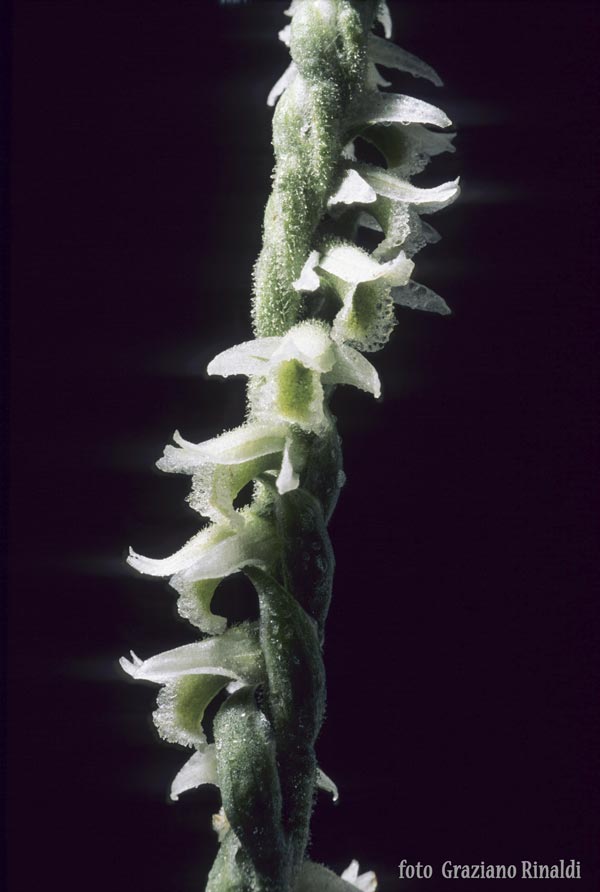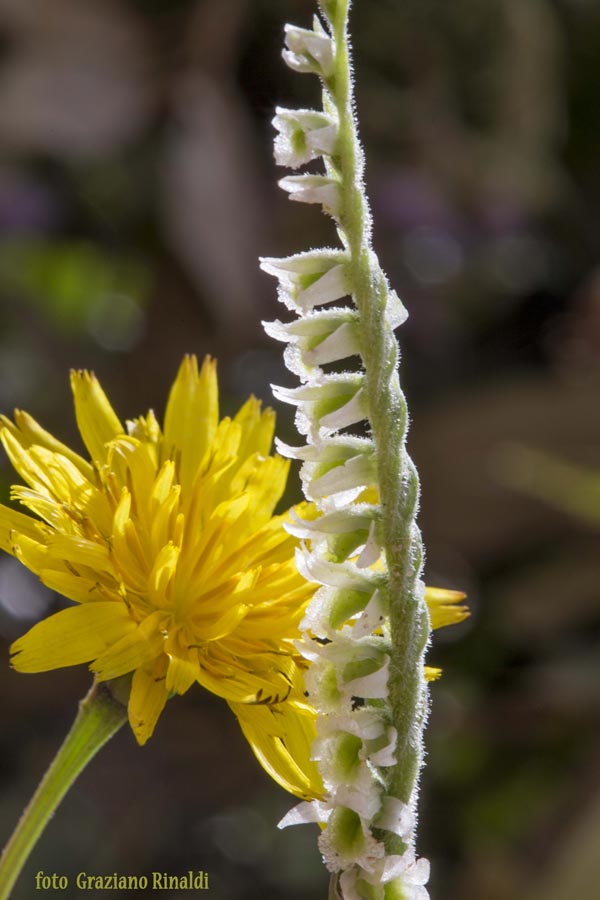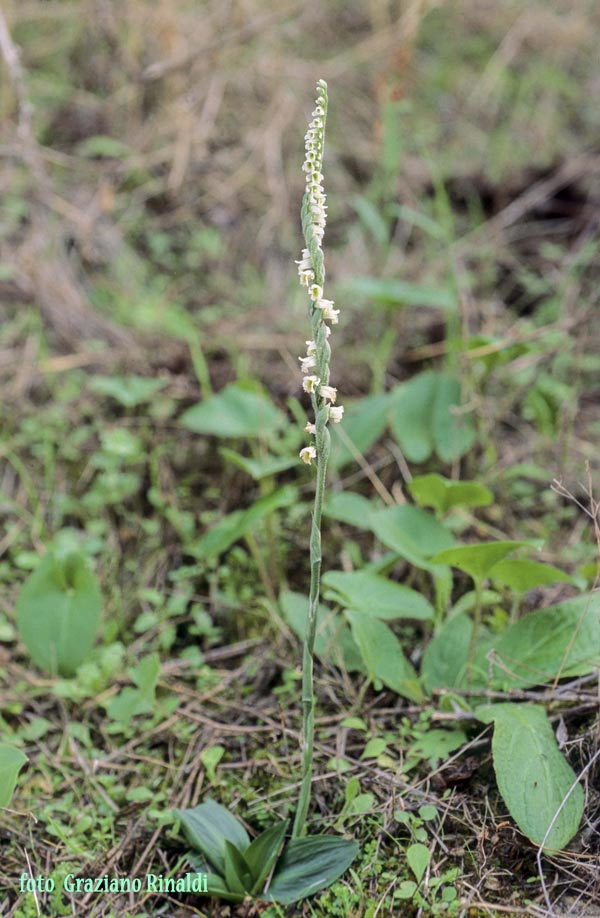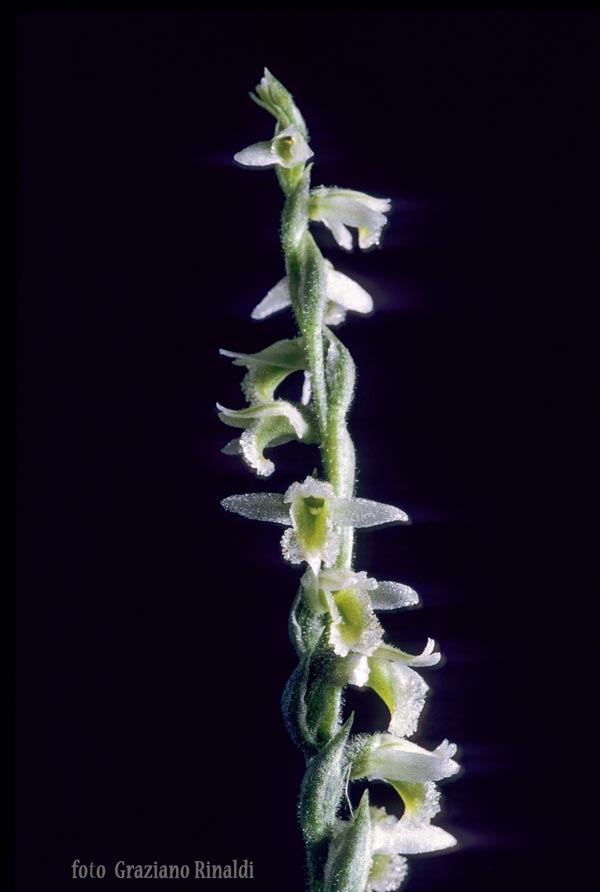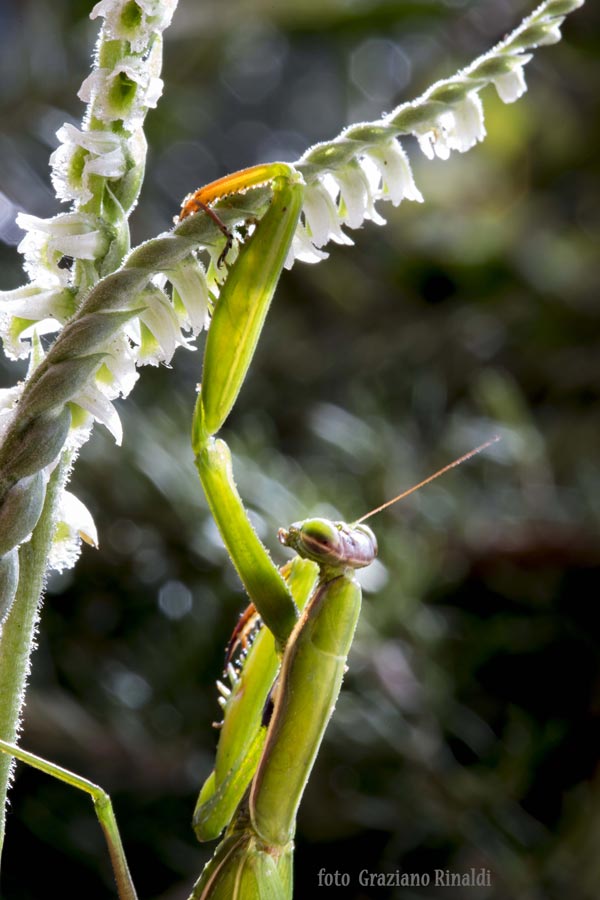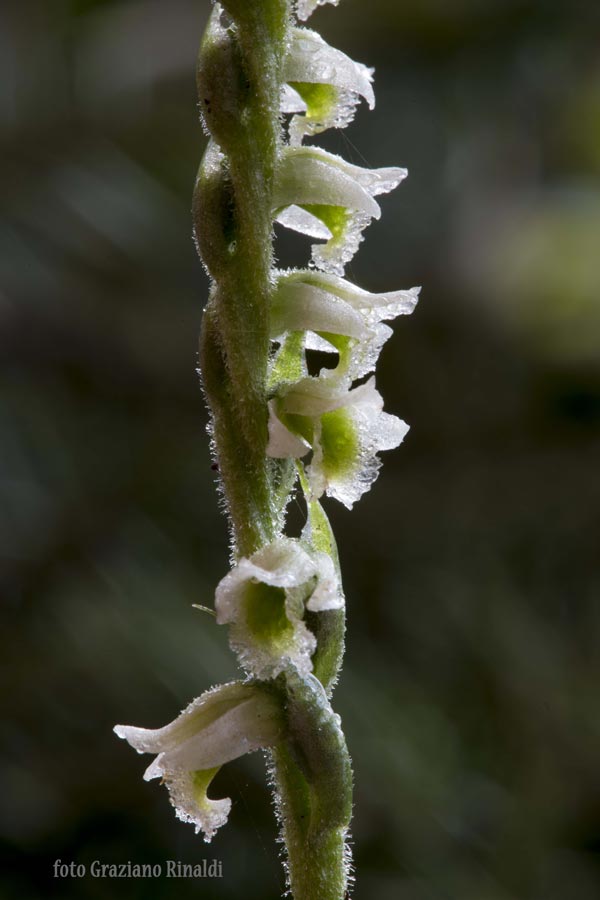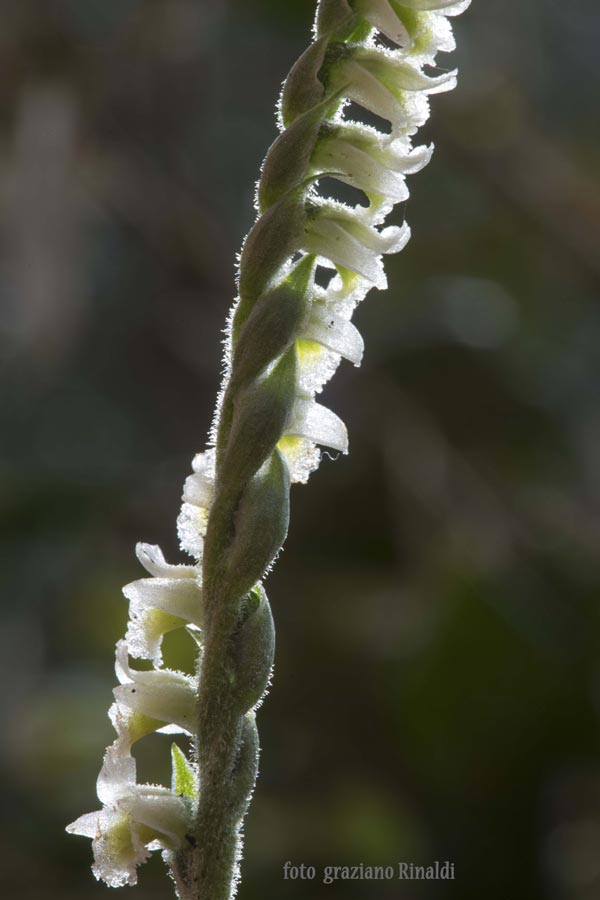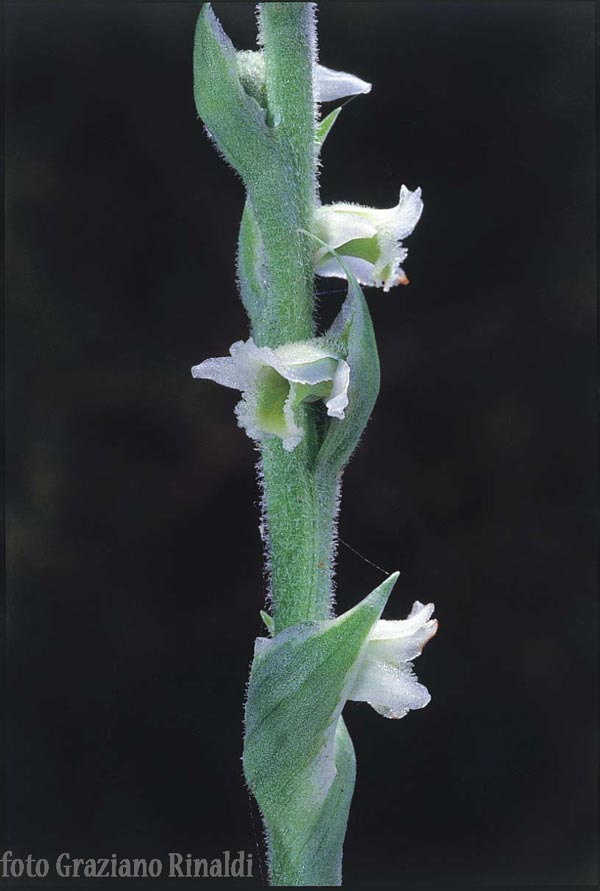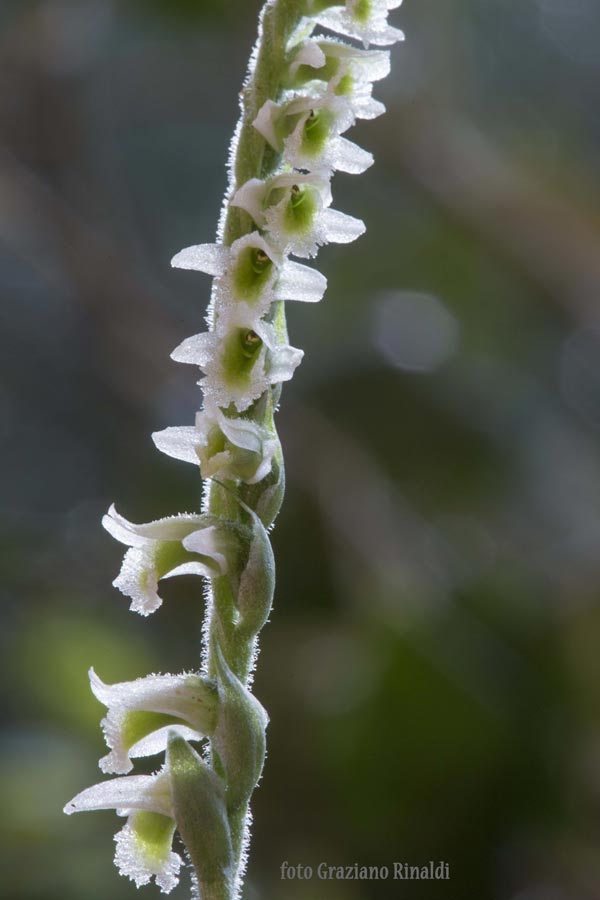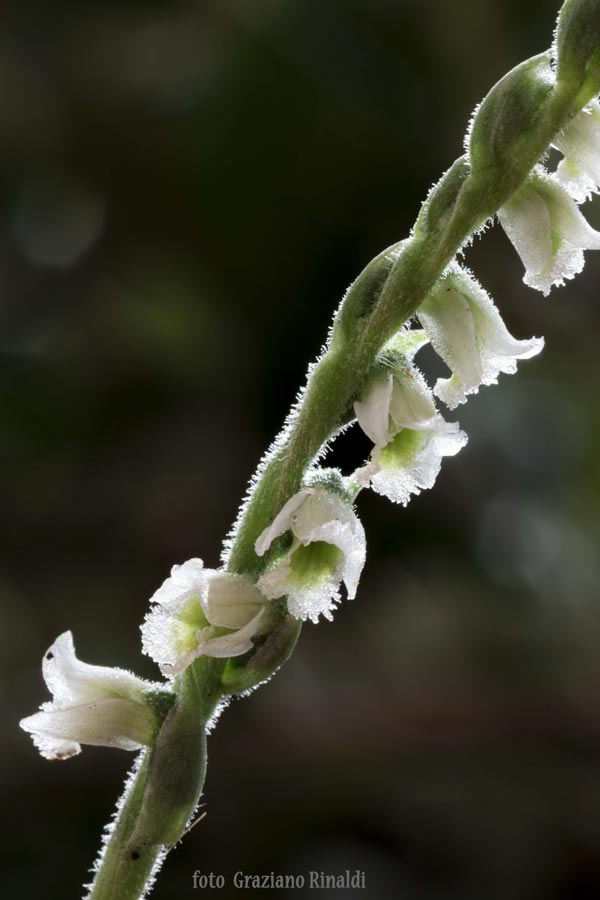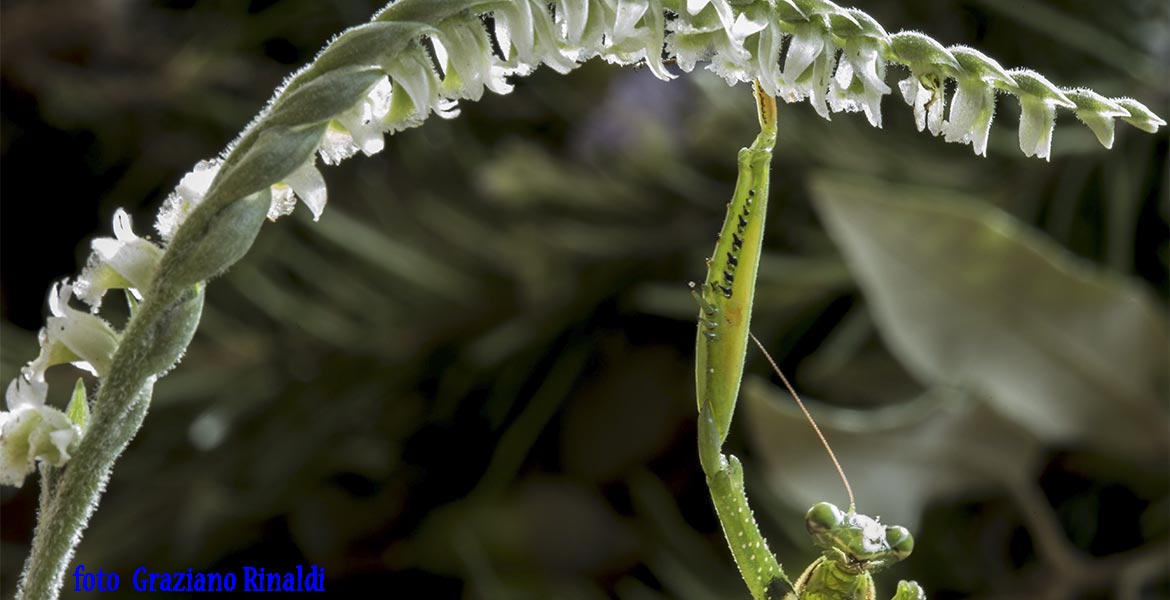It is the last wild orchid to bloom on the Island of Elba and can be found in sunny clearings, where it remains well protected, seeming like a large underground root, until early autumn. When the hours of sunlight decrease in favour of evening darkness and with the stimulus of the first rains in October, then the first germinating inconspicuous rosette of glossy leaves typical of the orchid family start to grow. In short, the side of these leaves which are pressed in to the ground start to raise a thin stalk barrel no longer than 20 cm, around which gather tiny flowers of pure white that fade into a light green, surrounded by a subtle aroma of cinnamon. Having spent the most critical summer drought period in the Mediterranean underground, the spike of flowers begin to spiral out from the chrysalis along the axis of the small but strong stem. The plant blooms for a few days, and produces an extraordinary amount of microscopic seeds which are very special, perhaps being the smallest of the Italian orchids, they do not have reserves of “food”, or egg white, which in the plant world is called endosperm, to develop. Something highly improbable that justifies such a high seed production, and so must enter into a symbiotic relationship with the same number of microscopic fungi of the genus Rhizoctonia which can provide the nourishment necessary for the development of the embryo in the seeds themselves.
The low reproductive probability through the seeds is offset by the ability of our orchid to issue temporary buds with thick stubby carrot-shaped roots, thus generating new individuals. However it is sexual reproduction is one thing that ensures the plants adapt better to varying environmental conditions, so the tiny little plant did not let slip the opportunity to be pollinated by tiny insects of the family of the Hymenoptera, as it is part of the orchids that produce nectar.
A few years ago, thanks to the advice of a orchid expert friend , I came across an orchid very similar to the spiralis, in the same genre, but much rarer, the Spirantehes aestivalis growing in the middle of a humid summer, I don’t know if the few plants that I was able to see then are still there because, like all plants that possess an edible bulb they are very tempting to the wild boar, or have become extinct or maybe some meagre specimens still survive in places inaccessible to hungry ungulates.
In any case, the elegance and delicacy of the spiralis is unique and instantly inspires the most virtuous metaphors that have to do with the luminous beauty of humility and the ability to find the infinitely great, and the infinitely small.

